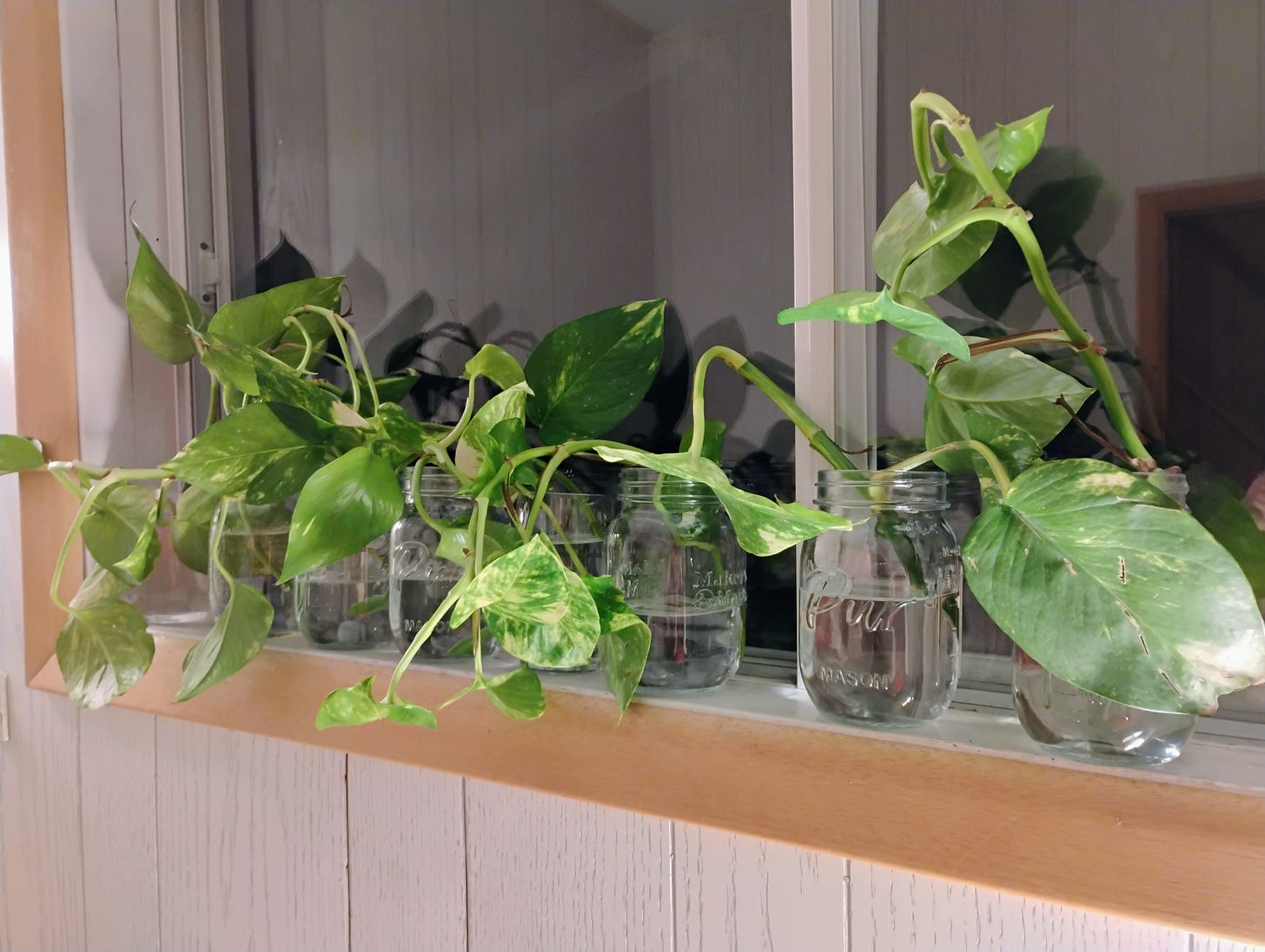Amid so much fear, horror, and violence across the globe—new, ongoing, and anticipated—I’m thinking about the inherent value of creative expression.
At the start of the pandemic, amidst the grief, fear, anger, uncertainty, and desperation, I noticed something singular online:
People were sharing poetry. Emails and social media posts were rife with it.
Some of it was “good,” or as the career poetry/literary academia world would deem it, “literary.”
Some of it was “bad,” according to that same world’s value system, since it would have been most at home on the inside of a greeting card.
Whether the poems were “good” or “bad” didn’t matter to the many people who were trading them like precious incantations for direction, connection, hope.
Before the pandemic was the phenomenal rise of Rupi Kaur (and other Instagram poets) whose poems were bemoaned by many in the literary world as “bad,” but who amassed millions of very inspired fans who disagreed.
It’s an old story. Generations of writers and readers have sneered at so-called “inspirational poetry,” at folk ballads printed on broadsides, at “light verse” daring to not take itself so desperately seriously.
But basing a work of art’s intrinsic value on its level of edginess, its place in the canon, its references, its uniqueness, how inscrutable it is, how groundbreaking, & so on, wastes precious time in these very short lives of ours, time that we could all be spending reading and writing poetry, viewing and making art, listening to and creating music.
After all, what gets assigned the monikers of “high” and “low” art is entirely arbitrary, as a Calvin & Hobbes comic strip once so eloquently illustrated.

Selling goodness
Many of us understood early on that our creative expression wasn’t “good.” Our drawings weren’t “good.” Our singing voice wasn’t “good.” We had no rhythm, two left feet, couldn’t spell.
Art-making was for someone more competent than us, who knew what was “good” and what was “bad”—usually someone white, rich, and/or well-connected who could sell the idea of “good” in their cultural products.
We continue this as adults. Many of us don’t dare to show people our drawings or let others hear our singing voices. We may refer to our favourite TV show as a “guilty pleasure” because it isn’t deep, philosophical, or educational but “merely” entertaining—as if art that brings joy and pleasure is “bad.”
We may dare to speak creatively to a friend, or use an interesting metaphor at a work meeting, but we probably follow it up with “if that makes any sense…” or “I know that’s weird” along with an uncomfortable chuckle (and much social anxiety afterward).
Creativity has been silo’ed. And there’s so much pressure to do it “right” that many of us give up before we’ve begun.
Why? It’s complex, and I’m no specialist on this topic, but some of the many roots of this include:
White supremacy’s fixation on declaring who/what is/isn’t intrinsically good/worthy
Capitalism and the need to monetize or declare a value for everything
People who’ve had financial, social, educational privilege
Institutions those privileged people support and uphold
Prove you’re “good”
A hyper-fixation on art-as-product is everywhere in professional creative worlds, but I see it most explicitly laid out in the realm of arts grant applications.
To be a competitive candidate for these hard-to-get, vital funds, one’s creative output must be different—and never derivative. It must also be growth-oriented—it has to push literature forward, or push the artist into new territory, or push aside barriers, or expand the genre or form, or blaze some trail.
There’s nothing wrong with those goals. To many of us, they’re very interesting and challenging goals. But by making uniqueness and newness the only gate through which an artist can pass in order to receive financial support for their work, we are declaring these specific qualities as the only measures of valuable, worthy art.
Which leaves a lot of other stuff in the dust, including but not limited to:
art as an inherently valuable practice, regardless of product;
following one’s time-honoured cultural traditions;
using tried-and-true forms and approaches.
What matters to me
To me, what gives a poem value is whether it helps anyone.
Did it help the person who wrote it? Did they feel better while writing it? Did it help them express something they’d formerly had no words for?
Did it help someone who was watching the writer, by giving them “permission” to try writing a poem themselves?
Did it help a reader who identified with it, or felt seen, heard, comforted? Did they experience catharsis, laughed, cried, felt inspired, awed, refocused, awoken?
Did it help on a broader societal level to raise awareness about an issue, or spread outrage about an injustice? Did it help activate peoples’ empathy?
If the answer is yes to any of these questions, even in the tiniest most smallest smidge of a way, then it was GOOD POETRY.
This essay is derivative
This has all been said before by more eloquent, more educated, more powerful voices. I’m okay with this. I’m tired of feeling I must break new ground every single time I’m creating or expressing.
So what is my point? This:
Your poem is good. Your poem is valuable.
We can work on bridging the gap between your goals for the poem and how you feel it measures up to your goals—that’s what I’m here for as a teacher and coach. But it already has intrinsic value.
Challenge
Below are four organizations that are helping people write and read deeply valuable poems—that offer both shelter and escape; that act as both lullabies and alarms.
In these heartbreaking times, let’s reach outward rather than inward—check out these organizations, read some poems posted on their sites, and support them in any way you can. Or, support another poetry organization you feel is helping people feel valued and heard.
Young People’s Poems Against Missiles: Ukraine
We Are Not Numbers: Palestine
Poetic Justice and Freedom Reads: Prisons





Spot on Elisabeth. So applicable to any art form imo and many of life's challenges too.
Hear hear!